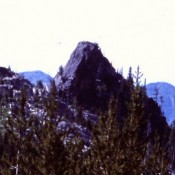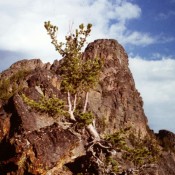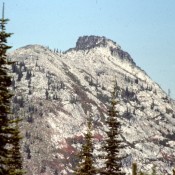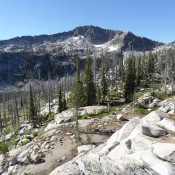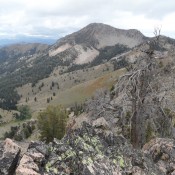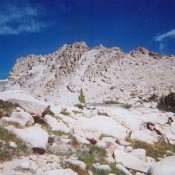
Climbing and access information for this peak is on Page 185 of the book. A variety of scrambling routes lead up the face to the summit block. Depending upon the route used to reach the hard granite on the peak’s upper slopes, you will have one to three pitches of moderate Class 5 climbing. I climbed this peak in 2000 … Continue reading
